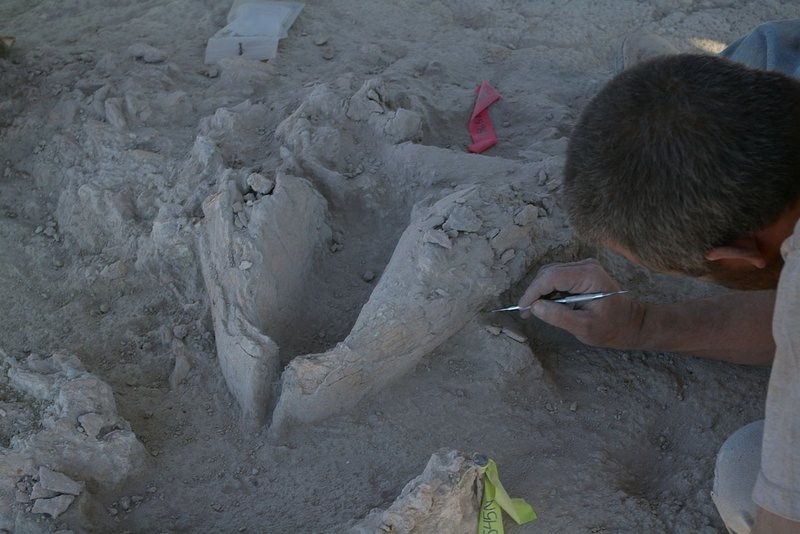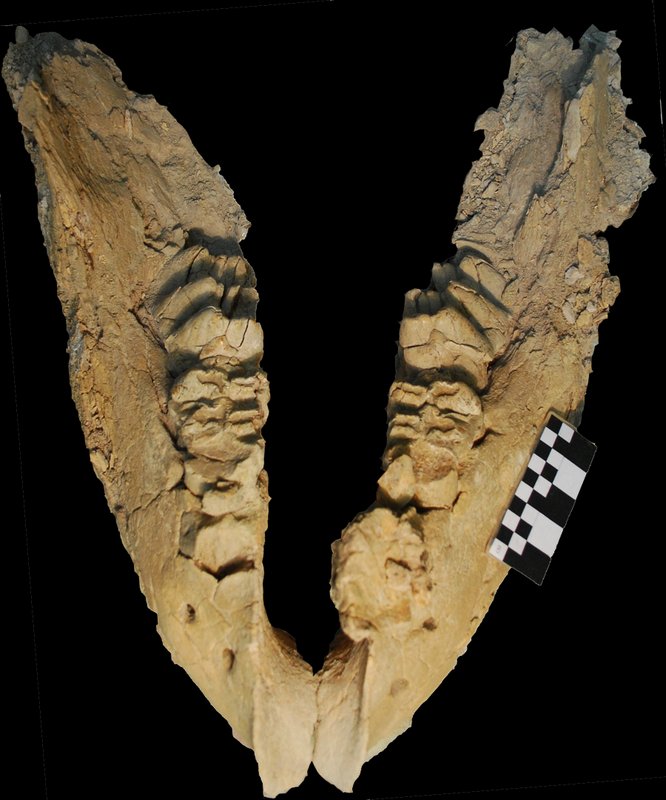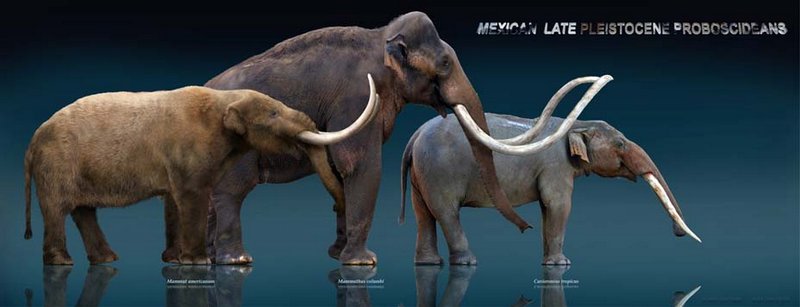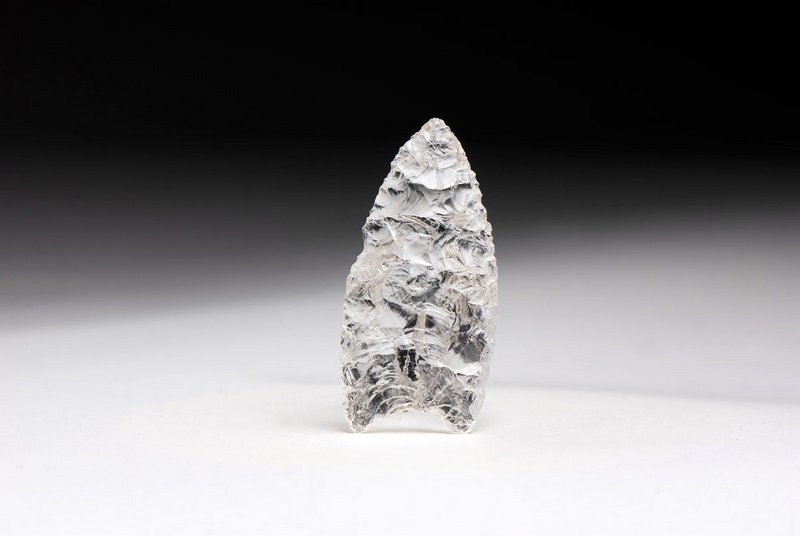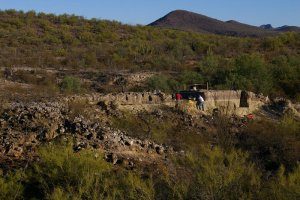
When University of Arizona archaeologist Vance Holliday and colleagues began uncovering large fossilized bones at the site of El Fin del Mundo in the Sonoran Desert of northwestern Mexico in 2007, they weren’t sure what kind of animal they were unearthing.
“At first, just based on the size of the bone, we thought maybe it was a bison, because the extinct bison were a little bigger than our modern bison,” said Holliday, who has been researching geoarchaeology at Paleoindian sites across the U.S. for years.
Then, in 2008, they discovered something that clinched it for them.
“We finally found the mandible, and that’s what told the tale,” Holliday said.
It was a gomphothere. Actually, two of them. About the same size as a modern elephant, but smaller than their extinct cousins the mammoths, gomphotheres were once widespread in North America but were thought to have disappeared from the fossil record long before humans arrived in North America some 13,000 to 13,500 years ago.
Until now.
Radiocarbon dating of charcoal flecks and burned bone found within the context of the fossils indicated a reliable age of 13,390 years. This made these two gomphotheres the last known gomphotheres in North America.
________________________________
Gomphothere mandible in place, upside down, at El Fin del Mundo excavation site. The fossil was fully prepared at the INAH zooarchaeology lab in Mexico City. Image courtesy of Vance T. Holliday.
______________________________
The fully excavated and prepared gomphothere mandible. Courtesy Joaquin Arroyo-Cabrales/Instituto Nacional de Antropología e Historia
_____________________________
These sculptures, made by Mexican artist Sergio de la Rosa, show three elephant ancestors: (from left to right) the mastodon, the mammoth and the gomphothere. Courtesy Sergio de la Rosa
_______________________________
But there was more.
As they excavated among the bones, they also uncovered human artifacts—Clovis artifacts, to be specific—including 7 projectile points, some stone cutting tools and 21 flint flakes from stone tool-making. The position and proximity of the Clovis fragments relative to the gomphothere bones at the site suggested that humans did in fact kill the two animals there. Of the seven points found at the site, four were in place among the bones, including one with bone and teeth fragments above and below. The other three points had eroded away from the bone bed and were found scattered nearby. This suggested that the gomphomeres were likely hunted and thus constituted a Clovis prey species, along with mammoths, mastodons, and bison, already known to have been hunted by the Clovis.
________________________________
A clear quartz Clovis point found near the bone bed at El Fin del Mundo. Although very difficult to shape into a tool, quartz was used by Clovis tool makers at several sites. Courtesy INAH Sonora.
______________________________
“This is the first Clovis gomphothere, it’s the first archaeological gomphothere found in North America, it’s the first evidence that people were hunting gomphotheres in North America, and it adds another item to the Clovis menu,” Holliday said.
The Clovis culture, today considered the oldest clearly defined and recognized Paleoindian culture in the Americas, is characterized by its distinctive stone tools, particularly the fluted projectile points. The first examples of this culture were discovered by archaeologists near Clovis, New Mexico, in the 1930s. The El Fin del Mundo site, along with the Aubrey site in Texas, is now among two sites that show the earliest solid evidence of Clovis hunting in North America, indicating that the earliest widespread and recognizable group of hunter-gatherers were already in place 13,390 years ago in the North American Southwest.
Holliday and colleagues suggest that the finds support the model of an American southwestern origin for the Clovis material culture. As they conclude in the study, published this week in the Proceedings of the National Academy of Sciences:
“These data expand our understanding of the age range for Clovis, Clovis diet, raw material preference, and the late Pleistocene megafaunal assemblage of North America, and provide evidence for a southern origin of the Clovis technocomplex.”*
Holliday and the study team report that the radiocarbon ages from El Fin del Mundo were made based on testing the site’s charcoal, shell, and organic matter at the Arizona Accelerator Mass Spectrometry Laboratory.
____________________________________________
*Article #14-04546: “Human (Clovis)–gomphothere (Cuvieronius sp.) association ~13,390 calibrated yBP in Sonora, Mexico,” by Vance T. Holliday et al.
In addition to Holliday, authors of the PNAS paper include: lead author Guadalupe Sanchez, who has a doctorate in anthropology from the UA; UA alumni Edmund P. Gaines and Susan M. Mentzer; UA doctoral candidates Natalia Martínez-Tagüeña and Andrew Kowler; UA master’s student Ismael Sanchez-Morales; UA scientists Todd Lange and Gregory Hodgins; and Joaquin Arroyo-Cabrales at the Instituto Nacional de Antropología e Historia.
The dig at El Fin del Mundo, a joint effort between the U.S. and Mexico, was funded by the UA School of Anthropology’s Argonaut Archaeological Research Fund, the National Geographic Society, the Instituto Nacional de Antropología e Historia and The Center for Desert Archaeology in Tucson.
Source: Some material for this article was adapted and edited from a University of Arizona press release, Meet the gomphothere: UA archaeologist involved in discovery of bones of elephant ancestor
____________________________________________
Read about the most fascinating discoveries with a premium subscription to Popular Archaeology Magazine. Find out what Popular Archaeology Magazine is all about. AND MORE:
On the go? Get the smartphone version of Popular Archaeology as an app or as an ebook.
Popular Archaeology’s annual Discovery Edition eBook is a selection of the best stories published in Popular Archaeology Magazine in past issues, with an emphasis on some of the most significant, groundbreaking, or fascinating discoveries in the fields of archaeology and paleoanthropology and related fields. At least some of the articles have been updated or revised specifically for the Discovery edition. We can confidently say that there is no other single issue of an archaeology-related magazine, paper print or online, that contains as much major feature article content as this one. The latest issue, volume 2, has just been released. Go to the Discovery edition page for more information.

